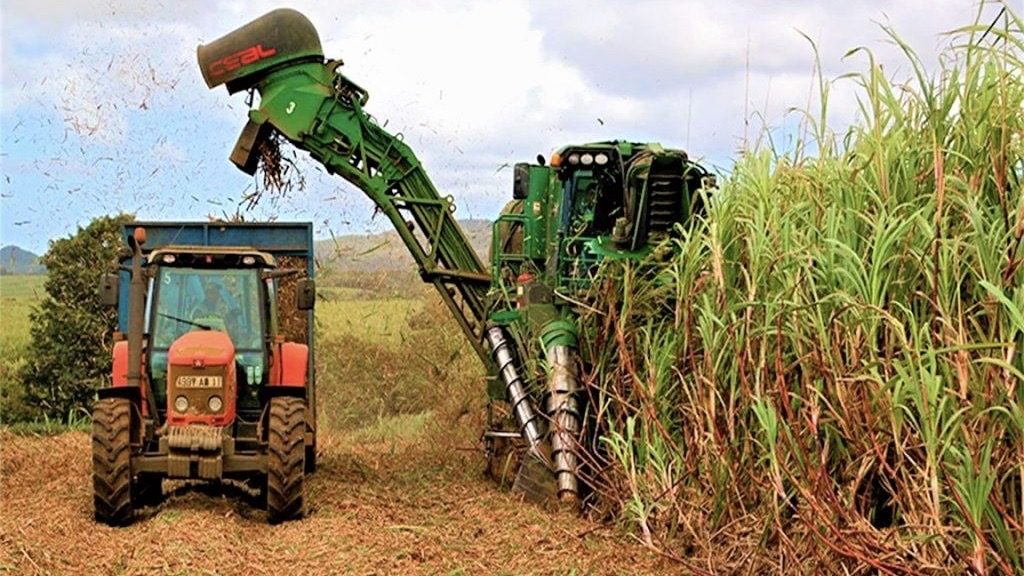
De los 424 obreros que laboraban en el Uruguay, 180 se dedican hoy a trabajos de reparación menor y 101 a actividades misceláneas. (Granma)
La noticia anunciada por el Gobierno cubano de que la zafra ni apenas alcanzó la produccion prevista de 455,198 toneladas de azúcar no constituye sorpresa alguna, sino la confirmación de que el sistema es la estampa misma del fracaso. A esta noticia hay que agregar que seguramente el azúcar comenzará a escasear en la Isla, como lo hacen ya una larga lista de alimentos y productos ausentes no solo en las tiendas en moneda nacional, sino también en las de divisas.
Lo peor de todo es que difícilmente el Gobierno tenga recursos para importar el déficit de azúcar que cubra la demanda interna del país. El régimen ha convertido al que fuera el mayor productor de azúcar del mundo en un país importador.
Al triunfar la Revolución el 1ro de enero de 1959 existían en Cuba 161 centrales azucareros. Casi la tercera parte de ellos (47), se encontraban en la provincia de Las Villas, que era la de mayor número de fábricas de azúcar en el país, seguida de cerca por Oriente con 39.
LA INDUSTRIA AZUCARERA HOY EN CUBA…
Los directivos de la empresa Azcuba revelaron este lunes al periodico oficialista Granma qué planean hacer con los centrales “dormidos” durante la próxima zafra. Solo 23 fábricas a lo largo del país, de las 56 que podrían funcionar, se encargarán de la producción, a partir de este noviembre, de las 455.198 toneladas de azúcar previstas.
Sin embargo, los centrales que no muelan caña este año “no serán desmantelados”, aseguró Dionis Pérez, director de comunicaciones de Azcuba. En un largo reportaje, el diario del Partido Comunista reconoce nuevamente las dimensiones “modestas” de la próxima zafra y justifica al Gobierno, que busca “mantener una producción estable” con el poco financiamiento que destinará a la producción cañera.
La zafra ni siquiera se acercará a la cifra demandada por los consumidores cubanos –alrededor de medio millón de toneladas de azúcar– y es de esperar que se destine principalmente a la exportación, el turismo y, el resto, para cubrir la canasta familiar.
Con el artículo de Granma, Azcuba previene a los trabajadores de los centrales inactivos sobre lo que deben hacer para justificar sus salarios. “Labores de reparación, mantenimiento y conservación”, resumió Pérez, “para lo cual se dispone de financiamiento”.
Una parte del presupuesto destinado a la zafra se desviará a las fábricas inoperantes, lo cual no descarta “los riesgos de desmantelamiento de maquinaria” por algún imprevisto en la planificación.
Una muestra más de la descomposición del régimen y de su inestabilidad de gobierno.
CUBA TODAY: THE SUGAR INDUSTRY, A PURE IMAGE OF GOVERNMENT FAILURE. PHOTOS.
The news announced by the Cuban government that the harvest hardly even reached the expected production of 455,198 tons of sugar is not a surprise, but rather the confirmation that the system is the very stamp of failure. To this news we must add that sugar will surely begin to be scarce on the Island, as is already the case with a long list of foods and products that are absent not only in stores in national currency but also in foreign currency stores.
The worst of all is that the government hardly has the resources to import the sugar deficit to cover the country’s domestic demand. The regime has turned what was the world’s largest sugar producer into an importing country.
When the Revolution triumphed on January 1, 1959, there were 161 sugar mills in Cuba. Almost a third of them (47) were in the province of Las Villas, which had the largest number of sugar factories in the country, closely followed by Oriente with 39.
THE SUGAR INDUSTRY IN CUBA TODAY…
The directors of the company Azcuba revealed this Monday to the official Granma newspaper what they plan to do with the “dormant” mills during the next harvest. Only 23 factories throughout the country, of the 56 that could work, will be responsible for the production, starting this November, of the planned 455,198 tons of sugar.
However, the mills that do not grind cane this year “will not be dismantled,” assured Dionis Pérez, Azcuba’s director of communications. In a long report, the daily of the Communist Party once again recognizes the “modest” dimensions of the next harvest and justifies the Government, which seeks to “maintain stable production” with the little financing that it will allocate to sugarcane production.
The harvest will not even come close to the figure demanded by Cuban consumers – around half a million tons of sugar – and it is expected that it will be destined mainly for export, tourism, and, the rest, to cover the family basket.
In the Granma article, Azcuba warns inactive central workers about what they must do to justify their salaries. “Repair, maintenance, and upkeep work,” Pérez summarized, “for which financing is available.”
A part of the budget allocated to the harvest will be diverted to inoperative factories, which does not rule out “the risk of machinery dismantling” due to some unforeseen planning event.
One more example of the decomposition of the regime and its government instability.
Agencies/ 14yMedio/ AzucarHist./ Extractos/ Excerpts/ Internet Photos/ Arnoldo Varona/ www.TheCubanHistory.com
THE CUBAN HISTORY, HOLLYWOOD.

* LOS QUE OLVIDAN SU HISTORIA ESTAN CONDENADOS A REPETIRLA.
* THOSE WHO FORGET THEIR HISTORY ARE CONDEMNED TO REPEAT IT.



 CUBA HOY: La Industria Azucarera, pura Estampa del Fracaso de Gobierno. PHOTOS. * CUBA TODAY: The Sugar Industry, a Pure Image of Government Failure. PHOTOS.
CUBA HOY: La Industria Azucarera, pura Estampa del Fracaso de Gobierno. PHOTOS. * CUBA TODAY: The Sugar Industry, a Pure Image of Government Failure. PHOTOS.


